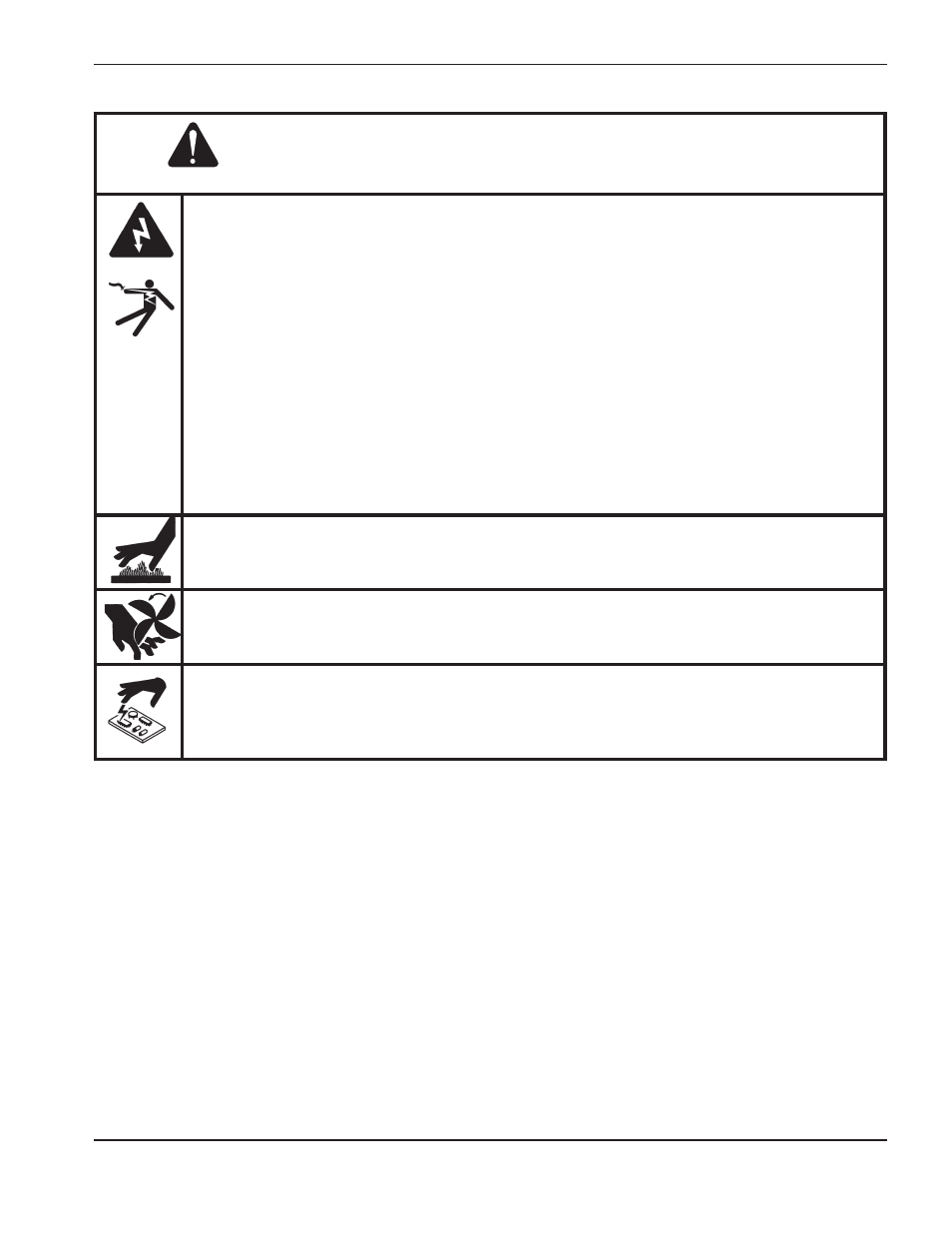Internal inspection, Initial resistance check, Danger – Hypertherm Powermax1250 Service Manual User Manual
Page 40: Powermax1250

4
MAINTENANCE
powermax1250
Service Manual
3-7
DANGER
ELECTRIC SHOCK CAN KILL
•
Turn off the power and remove the input power plug from its receptacle before removing
the cover from the power supply. If the power supply is directly connected to a line
disconnect box, switch the line disconnect to OFF (O). In the U.S., use a “lock-out / tag-
out” procedure until the service or maintenance work is complete. In other countries,
follow appropriate national or local safety procedures.
•
Do not touch live electrical parts! If power is required for servicing, use extreme caution
when working near live electrical circuits. Dangerous voltages exist inside the power
supply that can cause serious injury or death.
•
Do not attempt to repair the power board or control board. Do not cut away or remove
any protective conformal coating from either board. To do so will risk a short circuit
between the AC input circuit and the output circuit and may result serious injury or
death.
HOT PARTS CAN CAUSE SEVERE BURNS
•
Allow the power supply to cool before servicing.
MOVING BLADES CAN CAUSE INJURY
•
Keep hands away from moving parts.
STATIC ELECTRICITY CAN DAMAGE CIRCUIT BOARDS
•
Use proper precautions when handling printed circuit boards.
– Wear a grounded wrist strap when handling PC boards.
– Store PC boards in anti-static containers.
Internal inspection
1. Set the ON/OFF switch (S1) to O (OFF), unplug the power cord and disconnect the gas supply.
2. Remove the cover of the power supply by removing the 12 securing screws.
3. Inspect the inside of the power supply, especially on the side with the power board. Look for broken or loose
wiring connections, burn and char marks, damaged components and so on. Repair or replace as necessary.
Initial resistance check
All resistance values must be taken with the power cord disconnected and all internal power supply wires attached.
Perform the steps in
Internal inspection before continuing in this section.
• If the resistance values are not close (±25%) to the values given in this section, isolate the problem by
removing wires attached to the resistance check points or component until the problem is found.
• After the problem has been located and repaired, refer to the
Sequence of operation flow diagram in this
section to test the power supply for proper operation.
